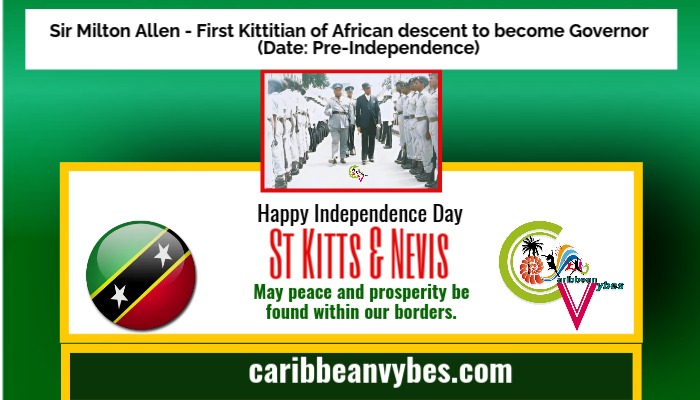Why St. Kitts and Nevis Pursued Independence while Anguilla Chose Not To
Read about the citizens at the end of this post
In the early 1960s, the islands of St. Kitts, Nevis, and Anguilla were grouped together under British rule, forming what was called the “Federation of Saint Christopher-Nevis-Anguilla”. While they shared a colonial government, each island had its own distinct culture, identity, and ambitions. The people of St. Kitts and Nevis began to push for greater autonomy, envisioning a future as a fully independent nation.
In 1967, Britain granted the federation the status of “Associated Statehood,” giving them internal self-government, while foreign affairs and defense remained under British control. This move was a significant step toward independence for St. Kitts and Nevis, but it also sowed the seeds of division, particularly with Anguilla.
While St. Kitts and Nevis were eager to take on more responsibilities and shape their destiny, Anguilla had long felt neglected by the central government in St. Kitts. Anguillans feared that being governed from St. Kitts would marginalise their small, remote island even further. Their grievances were ignored, and resentment brewed.
SEARCH FOR FLIGHTS TO ANY DESTINATION HERE
In May 1967, Anguilla took a dramatic step. Discontented with the political arrangement, Anguillan leaders declared their separation from the federation and sought to remain under British rule. Anguillans staged a revolt, expelling the St. Kitts police force from the island and hoisting the Union Jack. They were adamant that they did not want to be part of an independent federation led by St. Kitts, whose government they mistrusted.
Despite attempts to reconcile, Anguilla stood firm, and Britain eventually stepped in to settle the matter. After a few years of tense negotiations, Britain sent troops to Anguilla in 1969, but instead of a confrontation, the move was seen as a peaceful intervention. Anguillans were determined to remain connected to the British Crown.
Meanwhile, St. Kitts and Nevis continued their path toward independence. After years of political maneuvering and negotiations with Britain, St. Kitts and Nevis officially became an independent nation on September 19, 1983. The twin-island federation celebrated its newfound freedom, but Anguilla’s absence was a reminder of the complex colonial legacy they had navigated.
In the end, Anguilla’s decision to remain a British Overseas Territory was a testament to the island’s distinct identity and determination to chart its own course, separate from its Caribbean neighbours. St. Kitts and Nevis, while moving forward independently, respected Anguilla’s choice and forged their future as a sovereign nation.
TO READ A SAMPLE OR PURCHASE CLICK HERE
Click HERE and scroll to the end of the page to read about some of the icons of St. Kitts and Nevis. Or view the list below:
Kim Collins
May Stevens
https://caribbeanvybes.com/may-stevens-first-native-matron/
Dr. Jean Lenore Harney
Bronte Welsh
https://caribbeanvybes.com/bronte-welsh-first-public-health-nurse-in-st-kitts/
Lady Allen
https://caribbeanvybes.com/lady-allen-first-primary-school-teacher-to-receive-an-m-b-e/
Agnes Skerritt
https://caribbeanvybes.com/agnes-skerritt-former-chaperone-pharmacist-chairwoman-of-carnival/
Kenrick Georges – Produced the National Anthem
https://caribbeanvybes.com/kenrick-georges-composer-of-the-st-kitts-and-nevis-anthem/
Allister Williams
https://caribbeanvybes.com/allister-williams-deep-sense-of-patriotism/
Tunka Abdurama
https://caribbeanvybes.com/tunka-abdurama-master-of-creative-arts/
Lorna “Ava” Henry
https://caribbeanvybes.com/dance-icon-lorna-ava-henry/
SPORTS
Luther Kelly
https://caribbeanvybes.com/our-test-star-luther-kelly/
Victor Eddy
https://caribbeanvybes.com/victor-yaga-eddy/
Noel Guishard
https://caribbeanvybes.com/our-test-star-noel-guishard/
Edgar Gilbert
https://caribbeanvybes.com/our-test-star-edgar-gilbert/
Leroy Coury
https://caribbeanvybes.com/our-test-star-coury/
Cyril a.k.a.“Puntan”
https://caribbeanvybes.com/interview-with-a-cricket-encyclopedia-puntan/
Keeth Arthurton





























